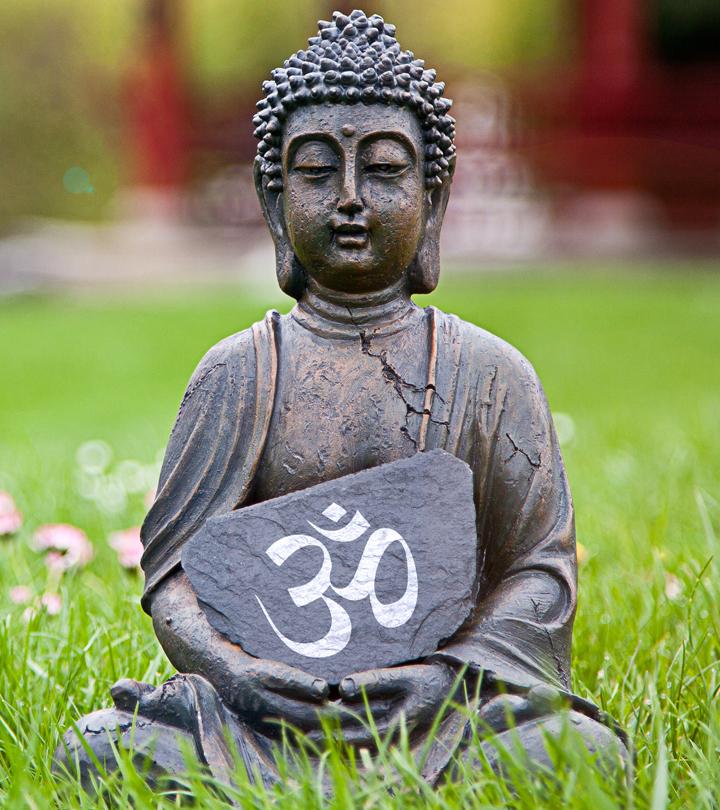5 Simple Meditation Techniques For Surat Shabd Yoga

Image: Shutterstock
‘In the beginning was the word, the word was Satnaam’
This yogi bhajan is also the basic essence of Surat Shabd Yoga.
Surat Shabd Yoga is a spiritual meditative practice, which is based on the concept of inner light and celestial sound. Many spiritual and religious traditions like Sant Mat and Radhasoami follow this practice. Surat Shabd Yoga is also called ‘Sahaj Yoga’, ‘the path of light and sound’, ‘the path of the sants’ and ‘the yoga of sound currents’.
Aim Of Surat Shabd Yoga:
‘Surat’ means ‘attention’ which is how the soul outwardly expresses itself. ‘Shabd’ literally means ‘word’. In Surat Shabd Yoga, the term ‘word’ signifies the music of the soul. ‘Yoga’ means ‘union’. And that is the main purpose of Surat Shabd Yoga – the union of the soul with the essence of the absolute Supreme Being, using the dynamic force of creative energy surrounding the universe in the form of sound vibrations. Surat Shabd Yoga meditation aims to help the individual in realizing his true divine self. Liberating the soul from the cycle of life and death, Surat Shabd Yoga helps in achieving enlightenment and ultimately, moksha.
The masters of Surat Shabd Yoga often describe the experience of this yogic meditation as ‘dying while living’. The meditation involves drawing one’s attention from the physical body and merging the consciousness with the inner sound and light. It is similar to the physical process of dying when the attention leaves the physical body and the soul merges into the celestial universe and the Divine. In Surat Shabd Yoga, one experiences the absorption of consciousness into the Light and the Sound in the state of full awareness.
Meditation Technique:
The mystics and saints call Surat Shabd Yoga the science of the soul. This meditation is also called ‘Sadhna’ as it leads to moksha. Surat Shabd Yoga believes that initiation by a Satguru is a must for a successful sadhna. This surat shabd yoga meditation technique is a simple process, but it needs practice to master it.
1. Time:
Although this meditation could be done anytime and anywhere, the masters advise to meditate early in the morning, before breakfast and possibly before sunrise and also just before you go to bed at night. Make it a regular habit. This helps in becoming adept at this form of meditation. With regular practice, you can perfect it and then can do the meditation successfully whenever you need or want to do it.
[ Read: Meditation Techniques And Their Benefits ]
2. Comfort:
The next thing that comes is your position and comfort. It is recommended that you do this meditation, like all other kinds of meditation, in a comfortable position. You need to relax your body to divert your attention from the outer world and turn it inwards. You can sit in a comfortable chair, or in Sukhasana or Vajrasana. But keep your back straight and do not let it slouch. Comfort does not mean hunching your body as that interferes with breathing.
3. Dhyana:
Next step in this meditation is dhyana or concentration. Close your eyes and relax your body. Let your breathing be natural; do not interfere. Let your consciousness leave your physical body and try to take it away from the mental mess in your mind. Concentrate on the dark screen that you see in your mind and concentrate at the eye center. Slowly you’ll hear the inner sounds, the inner music, the shabd. Ggradually that dark veil will get replaced by colors and light.
4. Simran:
Simran means repetition of the Naam. This could be OM, Allah Hul, Vahe Guru, Jesus, Satnaam, or any name that you believe can lead your mind out of the chaos. Our mind is like a butterfly, it is restless. Simran is the key to make it focus and open the door to our inner being. Surat Shabd Yoga believes in the ‘Panch Naam’ mentioned by the ancient gurus in the scriptures – ‘Jot Nirinjan, Omkar, Rarankar, Sohang and Satnaam’. Keep repeating the Naam to guide your mind out of the chaos brewing inside your brain.
5. Bhajan:
Bhajan here means the music of the soul. This step helps in listening to that music. Squat down in Malasana, also known as Bhajan Pose in Surat Shabd Yoga, and put your thumbs in your ears to block all kind of external noise. Focus on the seat of your soul, your Ajna Chakra and slowly you’ll start listening to the inner sound.
When you will successfully complete Dhyan, Simran and Bhajan, then you will merge with the celestial sound and the divine light. Feel the vibrations and the oneness with the almighty—and feel your soul soar high up!
Was this article interesting? Share your feedback with us in the comments section below.














